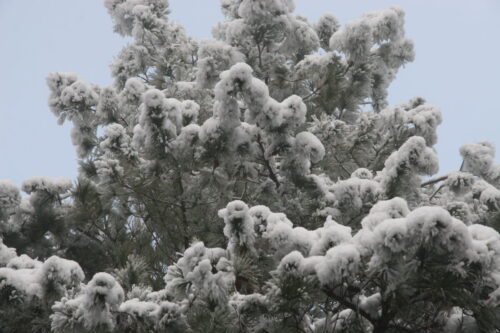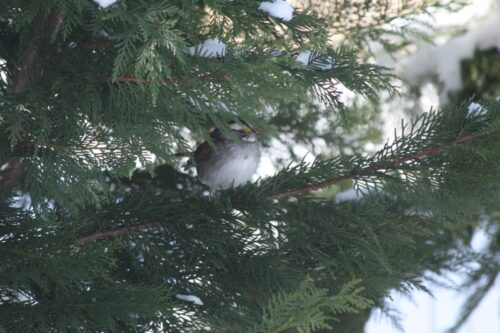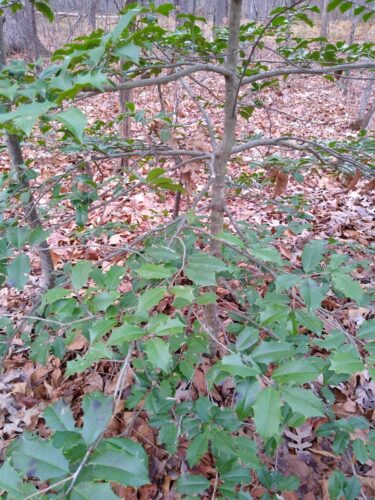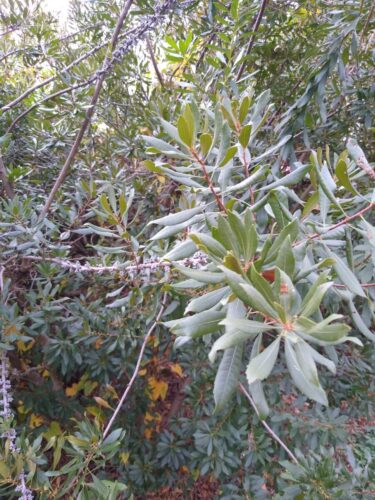Evergreens? Ever Useful!
January 13, 2023 8:33 am

By Ellen Powell, DOF Conservation Education Coordinator
In a bare winter landscape, our eyes are often drawn to any remnants of green, stirring the memory and promise of warmer days. But our native evergreens have winter value far beyond their looks.
Perhaps the greatest winter benefits of evergreens go to wildlife. Plants that keep their foliage through the winter provide thermal cover, or protection from cold temperatures. Dark needles absorb heat during sunny winter days, making it much warmer under a canopy of pines than under bare hardwoods. The needles also block the wind, thus reducing wind chill effects.
Evergreens slow and catch precipitation, allowing wildlife to shelter and stay drier during wet weather. This is especially important for small birds when temperatures are below freezing. Icy feathers can be deadly for birds, as they must be able to fly, because they eat constantly in winter to maintain body temperature.
- Needles catch loads of snow and ice.
- A white-throated sparrow shelters from the snow.
Evergreens also provide protection to small, tasty critters that can’t just sleep away the winter. Bare trees make small mammals and birds easier for predators to see and catch, but evergreens offer places to hide. Even fallen trees, large branches, or your used Christmas tree can provide some of these benefits, as the needles can remain on the tree for a long time.
Evergreens provide a winter food source for animals that “browse” (nibble on twigs and buds), most notably deer. This can actually be a problem if deer populations are high, as trees and shrubs may be damaged by too much feeding.

A deer browse line is evident on this redcedar. Photo by Paul Bolstad, University of Minnesota, bugwood.org.
Pines are the most abundant evergreens in Virginia, with one or more species common in every part of the state. Walk through a pine stand in winter and you’re bound to flush a few resting deer. The unkempt and unappreciated Virginia pine with its short, twisted needles actually provides some of the best wildlife cover, especially when the trees are young and dense. Another native conifer, eastern red-cedar, provides winter cover with a bonus: female trees produce small, berry-like cones that are an important food source to many birds.
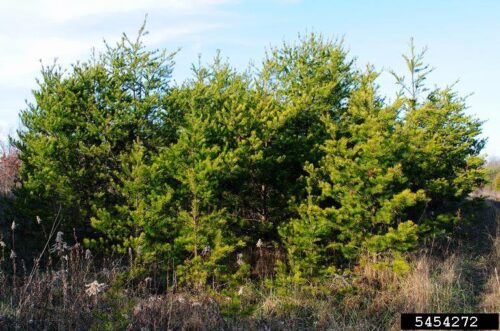
A cluster of young Virginia pines provides dense cover. Photo by Vern Wilkins, Indiana University, bugwood.org.
Not all of Virginia’s evergreens have needles. American holly and southern magnolia, most common in eastern Virginia, are examples of broad-leaved evergreen trees. Shrubs in this category include rhododendron in the mountains, wax myrtle near the coast, and mountain laurel (despite its name) statewide.
- American holly
- Wax myrtle
Evergreens can provide economic benefit to people as well – and I’m not just talking about Christmas trees. Evergreens planted along the north and northwest of your house can slow the wind, preventing drafts from entering cracks, and thus lowering your heating bills. Windbreak effects are best when trees are planted one to three times their mature height from your house.
Project Learning Tree® suggests some evergreen winter fun for the kiddos, from classic pine cone bird feeders to painting with evergreen “brushes.” Appreciate the evergreen season while you can, because soon enough, all of the woods will be awash in nature’s favorite color!
Tags: Tree Benefits, Wildlife
Category: Education

